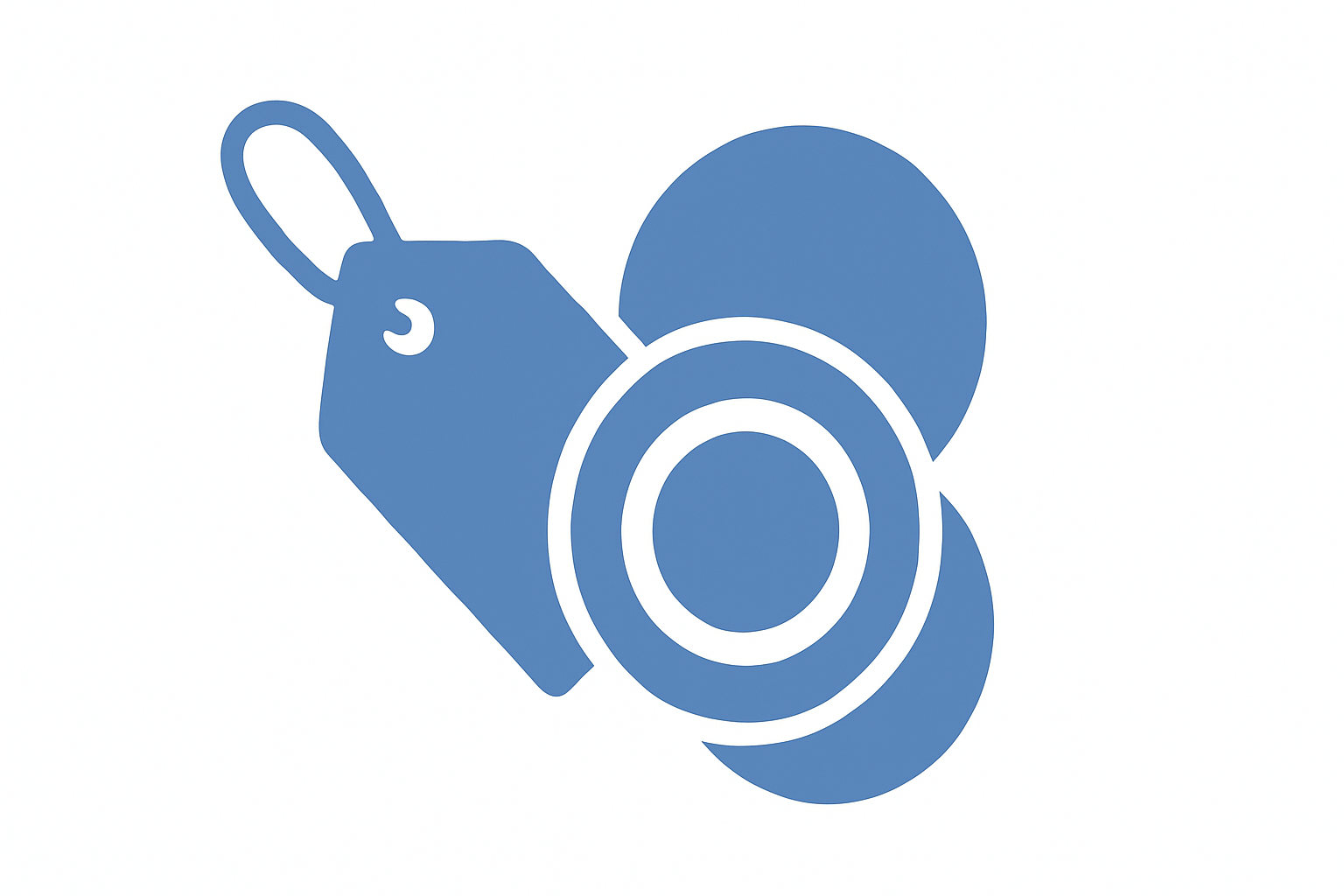Quick Overview
When it comes to effective advertising, picking the right channels can make or break your campaign. Traditional channels like TV and print still have their place, but the digital landscape—filled with social media platforms, search engines, and email marketing—is brimming with opportunities. Understanding which channels resonate with your audience can lead to impressive results, whether you're boosting brand awareness, generating leads, or driving sales.

Common Questions & Answers
Q: Is traditional advertising still effective in the digital age?
A: Yes! While digital advertising is growing, traditional methods can still create powerful brand impact, especially for broader audiences.
Q: How do I choose the best digital advertising channels?
A: Think about where your audience spends their time. If they're mostly on social media, focus there. If they’re searching online, try search engine marketing.
Q: How can I measure my ad campaign success?
A: Use tools like Google Analytics, social media insights, and conversion tracking to understand which channels and ads are performing well.

Step-by-Step Guide to Choosing the Right Advertising Channels
-
Define Your Goals
Start by identifying what you want to achieve. Is it brand awareness, lead generation, or sales? Each objective aligns better with certain advertising channels. -
Know Your Audience
Research where your audience spends their time. For younger audiences, social media and streaming ads work well, while older demographics may respond better to TV, radio, or print ads. -
Set Your Budget
Not all channels are equal in cost. Digital ads can start small and scale with success, while traditional media often requires a bigger upfront investment. -
Experiment and Track
Test different channels, track your metrics, and adjust as you go. Look for engagement, click-through rates, and conversion data to refine your approach. -
Optimize Regularly
Based on results, adjust your budget and strategy toward channels that drive the most impact. Continuous optimization is key for effective, sustained results.
Historical Context
The evolution of advertising reflects the changing dynamics of consumer behavior, media technology, and business strategies. Print advertising dates back to the early 18th century, where local businesses would promote their offerings in newspapers. This remained the standard until the rise of radio advertising in the 1920s. The ability to broadcast messages to households revolutionized advertising, allowing brands to establish trust and familiarity with audiences.
Television advertising emerged in the 1950s, ushering in the era of jingles, catchphrases, and visual storytelling that many of us recognize today. TV ads became powerful tools for mass marketing, particularly for large brands targeting family households.
The 1990s introduced the internet, which gave rise to banner ads, email marketing, and later, search engine marketing. This marked a critical shift in advertising as businesses could reach more specific segments, track user behavior, and measure ad effectiveness directly. The introduction of social media in the early 2000s further democratized advertising, empowering smaller brands to compete effectively through platforms like Facebook, Twitter, and later Instagram. Today, the synergy between traditional and digital channels is a strategic choice for brands, balancing broad reach with targeted engagement.

Business Competition Examples
-
Nike's Multi-Channel Strategy
Nike uses both digital and traditional channels to maintain brand visibility. For instance, Nike often invests in high-profile TV ads around events like the Olympics and the World Cup, reaching a global audience. Simultaneously, it relies on social media and influencer partnerships to connect directly with younger, active audiences on platforms like Instagram and TikTok. Nike’s approach illustrates the power of blending the mass reach of TV with the engagement of social media. -
Coca-Cola’s Cross-Platform Reach
Coca-Cola has perfected its balance between traditional and digital advertising. Its iconic holiday TV ads and billboards are instantly recognizable and serve as a nod to tradition. Yet, Coca-Cola also launches creative campaigns on social media, such as the #ShareACoke campaign, which encouraged social sharing. This cross-platform approach has helped Coca-Cola remain relevant across generations. -
Apple’s Integrated Advertising
Apple employs both traditional and digital strategies, notably using billboards and TV for clean, minimalistic ads that highlight its products. Apple complements this with digital campaigns, such as search engine ads and online video marketing, to reach users at all points of their buyer journey. Apple’s campaigns showcase how a premium brand can maintain consistency while reaching diverse audiences across platforms.
![]()
Discussion
Deciding between traditional and digital advertising channels can be challenging. Traditional advertising provides broad reach and often carries a sense of authority and prestige, which can strengthen brand credibility. However, these channels lack the specific targeting and immediate data analytics that digital channels offer, meaning that advertisers often don’t know the exact impact of their campaigns right away.
Digital advertising, in contrast, offers real-time metrics and advanced targeting, allowing brands to reach users based on their interests, behaviors, and online activity. The granularity of data in digital campaigns enables advertisers to tailor messages for precise audience segments, which is invaluable for businesses operating on tighter budgets and seeking measurable returns.
Despite the contrast between these two approaches, a combined strategy often proves effective. Traditional channels can drive broad awareness and brand trust, while digital platforms build engagement and loyalty. An integrated advertising approach allows brands to leverage the strengths of each medium, offering both wide visibility and targeted engagement.
![]()
The Debate: Digital vs. Traditional Advertising
The Case for Traditional Advertising
Traditional channels like TV, radio, and print have broad reach and are excellent for brand building, especially for companies aiming to establish a widespread presence or connect with local communities. They’re often perceived as more trustworthy by certain demographics, as the media spaces have long-established credibility. Additionally, traditional ads can provide a more immersive experience, especially TV commercials with high production values.
The Case for Digital Advertising
Digital channels are highly measurable and cost-effective, ideal for brands looking to optimize their spending and target specific audiences. Social media and search engine ads allow for rapid adjustments and provide immediate insights, enabling businesses to fine-tune their campaigns in real time. Digital advertising also facilitates direct interaction with customers, allowing brands to build communities and engage with users on a personal level.

Takeaways
-
Define Clear Goals: Setting specific advertising goals is the foundation of a successful campaign. If brand awareness is your main objective, traditional advertising on TV, radio, or billboards may offer the broad reach needed to introduce your brand to a wide audience. For goals focused on lead generation or sales, digital channels like search engine ads and social media may be more effective. By defining clear, measurable goals, you can align your channel selection with your advertising objectives and monitor progress more accurately.
-
Match Channels to Audience: Different audiences gravitate toward different media, making it crucial to understand where your ideal customers are spending their time. For instance, Gen Z and millennials are more engaged on social media and streaming platforms, making these channels effective for reaching younger, tech-savvy audiences. In contrast, older demographics may respond better to TV, radio, or print. Conducting audience research ensures you’re investing in the channels that best align with your customer base, maximizing campaign reach and relevance.
-
Experiment with Channels: Advertising is not one-size-fits-all, and experimenting with various channels can reveal unexpected successes. Digital channels offer flexibility and low-cost options, allowing you to run A/B tests to compare which platforms yield the best results. Starting small, particularly with digital ads, lets you assess the initial performance without committing excessive resources. Regular experimentation helps identify the most impactful channels for your brand and ensures your strategy remains dynamic and responsive to audience preferences.
-
Use Data for Optimization: Modern advertising provides access to a wealth of data. Google Analytics, social media insights, and CRM data can reveal user behaviors, preferences, and response patterns across channels. Leveraging these insights enables you to refine your campaigns, reallocate budgets, and make evidence-based adjustments that enhance performance. Using data to guide your advertising efforts increases efficiency, helps prevent budget waste, and maximizes return on investment over time.
-
Balance Reach and Engagement: Traditional media excels in reach, while digital media fosters engagement. Combining both approaches can result in a well-rounded strategy that builds brand awareness and encourages customer interaction. Traditional channels such as TV or radio can lay the groundwork for familiarity, while digital channels deepen engagement, allowing for personalized messaging and feedback loops. A balanced approach leverages the strengths of each medium, offering a comprehensive reach that nurtures ongoing engagement.

Potential Business Hazards
-
Overspending on the Wrong Channels: Without careful tracking, advertising budgets can quickly be depleted on channels that aren’t delivering results. For example, spending too much on high-cost traditional ads without measuring their impact can result in poor returns. To avoid this, ensure your budget allocation is aligned with channels that offer measurable impact. Regular performance reviews enable you to shift spending away from underperforming channels, protecting your budget and maximizing your investment.
-
Ignoring Analytics: Many companies overlook analytics after launching campaigns, missing key insights into customer behavior. Failing to monitor performance data can lead to wasted resources and missed opportunities for optimization. Analytics provide invaluable feedback on which channels are most effective, allowing you to make informed adjustments. Ignoring this data results in a less responsive, less efficient campaign strategy that risks misalignment with audience needs.
-
Neglecting Target Audience Preferences: Misaligning your channel choice with your audience’s preferences can lead to low engagement and reduced returns. For instance, running ads on social media for an audience that primarily engages with print media may fail to produce the desired results. Thorough audience research helps avoid this pitfall, ensuring that your message reaches consumers where they’re most active and receptive. Tailoring channel selection to audience behavior increases both engagement and conversion.
-
Overlooking Traditional Channels: In a digital-focused world, traditional advertising is often dismissed as outdated. However, traditional channels can still drive significant brand awareness, especially for products or services appealing to broad audiences. Ignoring these options can limit your brand’s reach and exclude potential customers. Assessing your audience demographics and goals holistically ensures that you’re not missing opportunities for engagement through traditional media.

Myths and Misconceptions
-
“Digital Advertising is Always Cheaper”
Digital ads may seem low-cost at first, but competitive keywords and high-quality placements can quickly drive up expenses. -
“Traditional Advertising is Obsolete”
Traditional media remains powerful for broad reach and brand recognition, especially for brands targeting less digitally-focused audiences. -
“Social Media Works for Every Business”
Not all audiences engage on social platforms, so assess your demographic’s behavior before prioritizing social media advertising.

Book & Podcast Recommendations
-
"Building a StoryBrand" by Donald Miller
This book helps businesses clarify their message for effective marketing, which can help determine the right channels. -
"Killing Marketing" by Joe Pulizzi and Robert Rose
This podcast provides insights into marketing’s evolving role, including the strategic use of both traditional and digital advertising. -
"Marketing Over Coffee"
A podcast that covers real-world tactics for both traditional and digital marketing.

Legal Cases
-
FTC vs. Google
A case highlighting transparency in digital advertising, particularly relevant for businesses using paid search ads. -
POM Wonderful vs. Coca-Cola
This case focuses on false advertising, a cautionary example of ensuring honesty in claims, regardless of the channel used. -
Campbell-Ewald Co. vs. Gomez
This case touches on SMS marketing and privacy, crucial for businesses venturing into mobile and text advertising
![]()
Share Your Expertise
What advertising channels have you found most effective for your business? Share your experiences in the comments to help others decide on the best strategies for their campaigns.
![]()
Wrap Up
Exploring different advertising channels is essential to building a successful campaign. Traditional media still holds power, especially in brand-building, while digital offers unparalleled targeting and flexibility. By understanding your audience, experimenting with different channels, and leveraging data, you can create campaigns that not only reach but resonate with your target customers. So get out there, mix it up, and find the channels that make your message shine.
![]()












